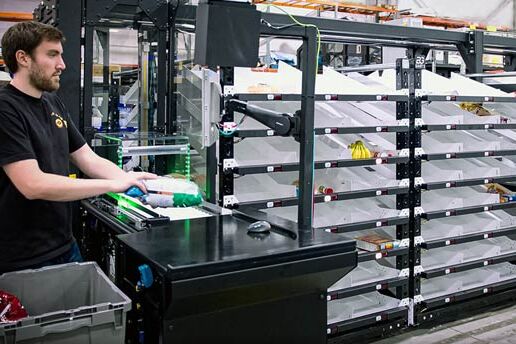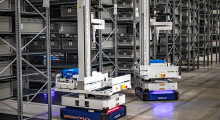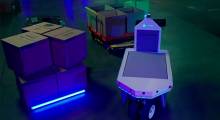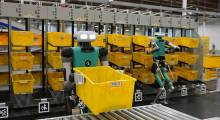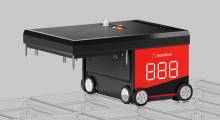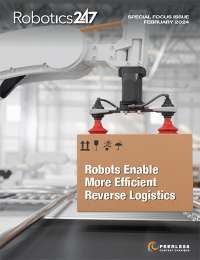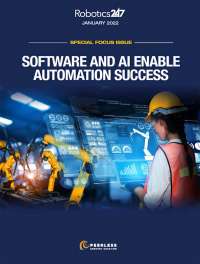The 2022 holiday rush and subsequent returns validated the need for automation, claimed Berkshire Grey Inc. Labor shortages, growing e-commerce demand, and the volume of returns are challenging retailers, it said.
U.S. online sales increased from $257 billion in 2021 to $270 billion in 2022, according to Salesforce. It noted that holiday sales were flat worldwide but continued to grow in the U.S.
In its “2022 State of Retail & eCommerce Fulfillment Report,” Berkshire Grey found that 57% of executives believe that labor shortages have hindered their ability to meet demand. The Bedford, Mass.-based company also said 60% of respondents planned to increase hiring for order fulfillment, but 47% also planned to increase investments in warehouse automation.
On the reverse-logistics side, Berkshire Grey found that 71% of executives believe that offering free returns is necessary to staying competitive. As much as 18%, or $158 billion, of merchandise sold during the holiday season is returned, noted the National Retail Federation.
Chris Geyer, vice president and fellow at Berkshire Grey, recently spoke with Robotics 24/7 about e-commerce trends and automation. He was previously a research scientist at Carnegie Mellon University and iRobot.
“I'm an engineer by training and have been working on putting computer vision in things that fly, drive, or have arms for 25 years,” said Geyer. “I'm part of the interface between engineering, sales, and marketing.”
Demographics and supply chain shifts
We've heard a lot about the labor shortage being the biggest challenge for supply chains. How does that help or hurt robotics?
Geyer: Companies are looking at their strategies and are seeing the demographics. Boomers are retiring, birth rates are plummeting, and even now, customers can't find workers to do the jobs.
In our survey, about 70% of executives said they need robots in warehouses to move goods to customers. During the [COVID-19] pandemic, there were acute shortages, and labor costs went up. They haven't continued to rise at the same rate, but they haven't gone down.
The Walmarts of the world don't have problems with capital, but smaller players haven't traditionally used automation. Berkshire Grey offers robotics as a service [RaaS], which takes the capital burden off of companies and makes it easier for some operators to adopt robots.
While e-commerce continued to grow in the second half of 2022, isn't there also a shift toward omnichannel?
Geyer: Most of the focus has been on e-commerce because most of the growth in demand has been in that channel.
Compared with retail applications, where the cost of handling a whole pallet of paper towels or a case of goods is still less than each picking, in e-commerce, every single item has to be handled. More labor is required, and demand is still growing.
Within e-commerce, have you seen increasing interest in grocery fulfillment?
Geyer: One application we've seen in grocery is coupling robots with ASRS [automated storage and retrieval systems].
We've developed technology to pack goods in a grocery bag. For a long time, robots have been able to pick things, but to pack a cucumber in a bag with other goods is a nontrivial operation.
The robot has to understand how it's holding the item and determine its geometry as it transfers it. We're doing this live in a customer's warehouse. We've developed this not only for grocery bags, but also for e-commerce orders.
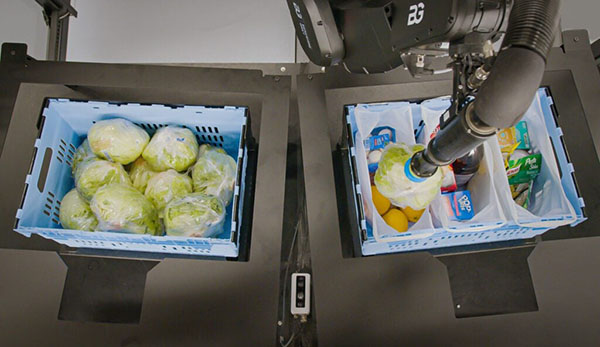
AI and vision as enablers
How important is artificial intelligence to improving robotics performance?
Geyer: AI informs how we do the picking. We use additional data from the act of picking across instances to improve the performance of systems over time. We do a good job of picking a variety of stuff on the first attempt, and we use AI to increase throughput over time.
When you talk to engineers, they're happy, but operators aren't so sure. We have to make sure that the moves that a robot does to increase performance are done in a conservative way. Maintaining a safe envelope is really important to getting the trust of operations folks.
Given your experience in machine vision, how is that enabling technology evolving?
Geyer: We've done work to, for example, recognize and ensure that we're picking one item. This includes object recognition for items the robots haven't seen at all before.
There's more industrial use of smaller-scale lidar sensors, which have only become widely available in the past couple of years. 3D systems improve how we scan and hold items to be packed into a grocery bag.
When the system looks into a bag to figure out what to place, it can identify voids on the fly for placement and mitigate issues like a can of beans rolling away.
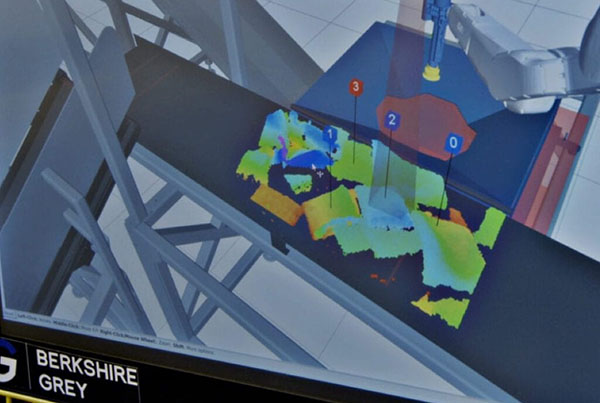
Sortation supports returns
Does Berkshire Grey see returns as different from order fulfillment, or is it a similar process to automate?
Geyer: Many retailers are narrowing their policies because of costs. That's part of our reason for getting into this space. For our customers, one-sixth of the volue that goes out comes back. They've asked us because they'd like to put their labor elsewhere rather than handling individual returns.
Fundamentally, the operations that need to happen, like sorting, are very similar. The volume is harder to handle—it's slightly less structured, uniform, or packaged coming back.
Also, in 2022, 16.5% of orders were returned, and of that, about 5% were fraudulent. Operators may not be able to detect fraud by sorting by brand and category, but automation offers to help.
How mature is the market for reverse-logistics automation?
Geyer: It's still nascent. Berkshire Grey's customers have expressed the desire, but most are focused on outbound rather than inbound volumes.
What are the “low-hanging fruit” that can be easily automated? Reverse logistics might be one.
Do processes need to be restructured to handle returns?
Geyer: With RPSi—Robotic Process Sortation and Identification—we can handle products or packages, presort packages into brands and categories, and reduce labor by about a third. FedEx also uses Berkshire Grey's systems, which can handle the wide variety of conditions that packages come in.
For that solution, we're mainly presorting parcels that come in as returns. The system can can the barcode on the item to capture it for sorting. It singulates, scans, and sorts for up to 84 destinations.
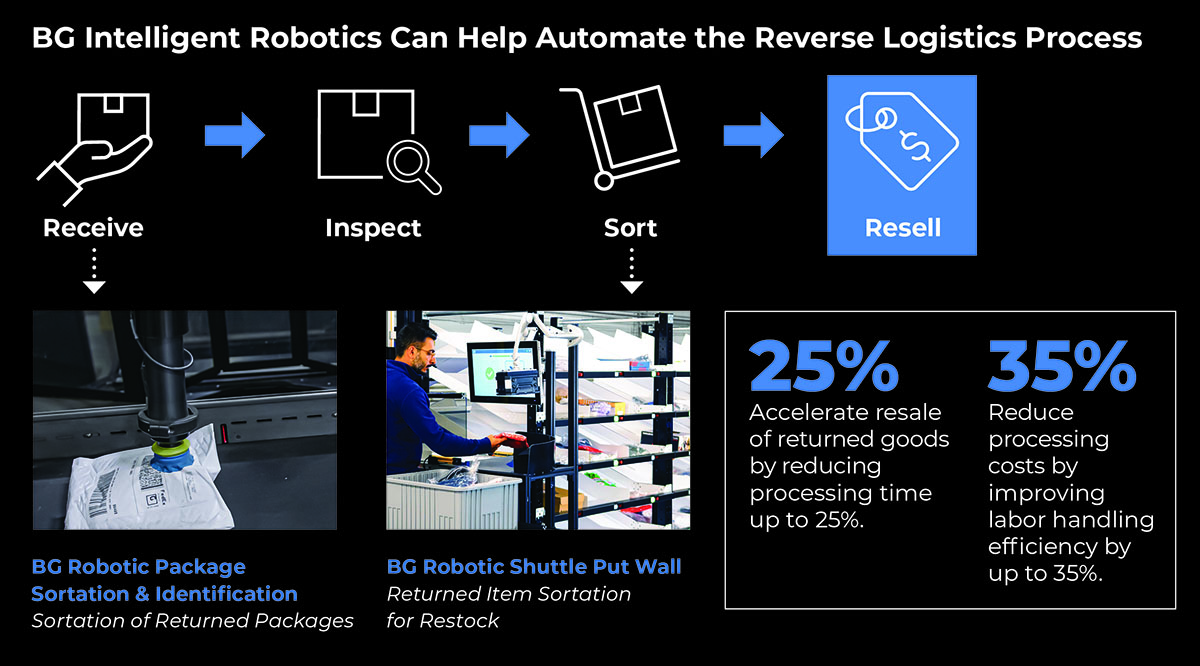
Berkshire Grey systems can sort diverse SKUs
What kinds of goods can Berkshire Grey's sortation systems handle?
Geyer: We're involved in general merchandise, including electronics and apparel—just about everything. I'm not a retailer, but our systems make retail processing more efficient to get items on shelves as quickly as possible.
Our Robotic Shuttle Putwall (RSPW) is well-adapted to a wide SKU variety. It handles the unpackaged mix of goods you get in returns and can be configured for reverse-logistics applications.
How are RPSi and RSPW designed to handle otherwise hard-to-sort goods?
Geyer: For instance, RPSW is able to sort very small goods, such as cosmetics, for returns. Shoes have a high rate of return and RSPW can also handle shoeboxes.
RSPi is now able to weigh items, which allows packaging and shipping companies to charge their customers appropriately. Automation allows them to focus resources on value-added steps in reverse logistics, like training people to be more adept in detecting fraud.
Looking ahead
What do you expect in 2023?
Geyer: Aside from e-commerce, grocery and packing applications will grow significantly. Looking at the labor involved for handling anything in warehouses—we expect companies to continue automating. We focus on both new and repeat customers.
Other companies are doing automated truck unloading, but we're focused on handling units to get them to consumers.
About the Author
Follow Robotics 24/7 on Linkedin
Article topics
Email Sign Up

